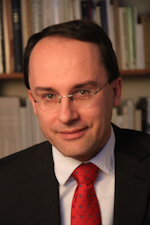The week of October 16, 2017 was Photonics Week in Berlin, and the local photonics community convened in Adlershof. The meeting attracted around 500 people. Not much for a big city such as Berlin, one might think. Is that typical for photonics?
A hundred years ago, Berlin was home to industry giants such as Siemens or AEG, the German GE. The town was called Elektropolis to reflect its role in innovation. That was long ago—all those big players left town or dissolved into many smaller parts. The historical sites give home to a lively mix of research institutions and innovative companies.
In 1991, the city of Berlin started to develop Adlershof, an area with several institutes from the old East German academy of science, wrecked barracks, and an old airfield. It took more than 25 years and almost 2 billion euros of private investment and public tax funds to change that area into a vital hotspot for business and research.
Research was already strong, but when Berlin’s Humboldt University set up a new campus for the natural sciences there, it was the final boost. Adlershof is home to a number of research facilities such as BESSY and the Max-Born-Institute, and many small and medium companies, especially in photonics.
But that is where innovation comes from
If we look around, we find a number of such photonics hubs. For example, Rochester, NY, or Tucson, AZ, in the U.S.; Jena, Aachen, or Munich in Germany; and Paris or Bordeaux (to name but a few) are home to a lively photonics community. The people there spark global innovation on groundbreaking fields such as telecommunication, mobility, or future computing technology.
In Berlin, there are a lot of hidden champions. Take u2t, a spinoff from local Heinrich Hertz Institute. When Finisar bought the company in 2014, it was the technology leader for 100G optical communication technology. Their indium phosphide technology led to faster photodetectors and were a prerequisite for 400G technology. Or in the case of First Sensor, this 800-person company supplies lidar champion Velodyne with the core component in its system, the avalanche photodiode.
Larger companies watch the process and buy in or create subsidiaries in the environment of particularly innovative institutes, including Trumpf and Jenoptik, which both started laser diode firms in walking distance to the Ferdinand Braun Institute in Adlershof.
What can we learn from that? Photonics is indeed a small business. Which is nothing to worry about. Its size seems closely connected to its innovative spirit. It grows in the vicinity of research institutions. As an example, after 20 years of re-development, Berlin-Adlershof provides work to 10,000 people. A dozen research institutions, plus almost a thousand companies have settled here. Now, it is Germany’s biggest technology park with photonics as a core technology.
When people gathered in Adlershof for Photonics Week, they came for a program that was closely oriented to the needs of that community. One could learn from serial founders how to create a startup or to address international business opportunities. Or one could visit topical meetings ranging from laser materials processing to quantum communications. And yes, there was lidar, too.

Andreas Thoss | Contributing Editor, Germany
Andreas Thoss is the Managing Director of THOSS Media (Berlin) and has many years of experience in photonics-related research, publishing, marketing, and public relations. He worked with John Wiley & Sons until 2010, when he founded THOSS Media. In 2012, he founded the scientific journal Advanced Optical Technologies. His university research focused on ultrashort and ultra-intense laser pulses, and he holds several patents.
